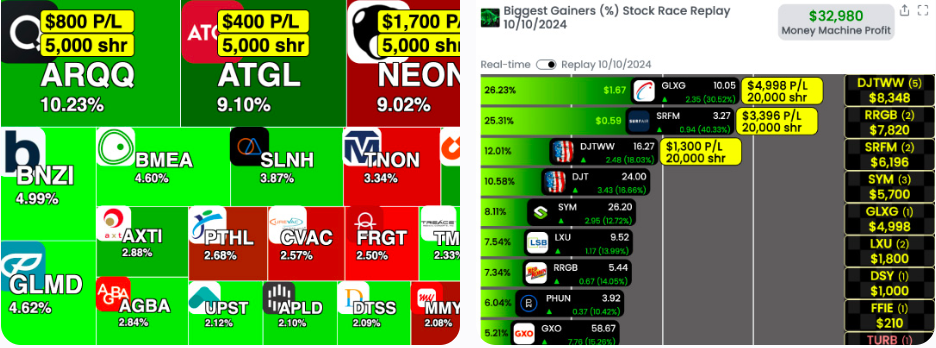20 Free Reasons For Selecting AI Stock Trading Platform Sites
20 Free Reasons For Selecting AI Stock Trading Platform Sites
Blog Article
Top 10 Tips To Evaluate The Integration Of Ai Platforms For Predicting And Analyzing Stocks And Their Compatibility
AI stock trading platforms that can predict and analyze stocks based on AI require compatibility with each other. Integrating your platform with existing tools, systems and workflows is fantastic way to boost efficiency. Here are the top 10 tips to evaluate the compatibility and integration of these platforms:
1. Check Brokerage Integration
The supported brokers are listed below. Make sure that the platform can be integrated with your brokerage or trading account.
Trade execution: Check whether your platform allows the execution of trades directly through an integrated broker.
Account Synchronization: Check whether your platform is able to sync real-time account balances as well positions and transaction histories.
2. Check the availability of APIs
API access - Ensure that the platform includes an API to allow developers to build customized tools or automate workflow processes.
API documentation - Verify that the API's example and usage scenarios are properly documented.
Rate limits: Verify whether the API has reasonable rate limits and can accommodate your expected use.
3. Examine the integration of third parties
Popular tools Check to see if there are any integrations between the platform as well as tools such as Google Sheets, Excel, or trading robots.
Export and import of data. Check that your platform can import or export data from or into any other software.
Extensions/Plugins: Make sure your platform supports extensions and plugins that can provide more functionality.
4. Test Compatibility Using Operating Systems
Desktop compatibility: Make sure the application works with the operating system you prefer (Windows, macOS, Linux).
Mobile compatibility: Verify if there is an application that is mobile compatible for iOS or Android.
Web-based access (for additional flexibility) Check that the platform is accessible via an internet browser.
5. Assessment of the Data Integration Capabilities
Data sources - Check that the platform can be linked to different sources of information (e.g. news feeds or market data, and sentiments on social media).
Real-time analytics: Be sure the platform integrates real-time analyses.
Verify the platform's capability to import old data.
6. Cloud and On Premise Compatibility
Cloud-based Platforms: The platform must be available anywhere there is an internet connection.
On-premises Solutions: If your would prefer to deploy on-premises ensure your platform is compatible.
Hybrid alternatives: Find out whether the platform has the option of a hybrid model, which combines cloud and on-premise capabilities.
7. Look for Cross Platform Syncronization
Device synchronization. Make sure that settings and data are synced across all platforms (desktops tablets and mobiles).
Verify that changes made on one device reflect on another.
Access to offline data: Determine whether your platform provides limited data access and functionality while offline.
8. Assess Compatibility of Trading Strategies
Automated or algorithmic trading: Ensure that the trading platform supports these strategies.
Custom indicators: Check whether the platform supports the use of customized technical indicators or scripts.
Strategy backtesting. Check whether the platform allows strategies for backtesting based on previous data.
9. Examine Security and Compliance
Data encryption - Ensure that your system is using encryption for all data, both during transit and when it is at rest.
Verify that your platform supports an authentication method that is secure (e.g. 2-factor authentication).
Compliance with regulations - Make sure the your platform is compliant with pertinent laws, e.g. GDPR. FINRA. SEC.
10. Test Scalability Performance
Scalability: Ensure the platform can handle growing amounts of users and data as your needs expand.
Performance during load conditions: Check whether the platform continues to be active during times of high volatility in the market.
Resource usage: Make sure the platform makes efficient use of system resources like memory, CPU and bandwidth.
Bonus Tips
Customer feedback: Read user reviews and testimonials to evaluate the integration capabilities of the platform.
Trial period: Try an unpaid trial or demo to experience the integration of the platform with your existing tools and workflows.
Customer support: Ensure that the platform provides robust customer service to address issues related to integration.
These tips will help you evaluate the compatibility and integration capabilities of AI software for analyzing and predicting stocks. This will ensure that they work seamlessly with your existing systems and increase your trading efficiency. Take a look at the top rated ai for investment url for website recommendations including stock ai, options ai, ai investing platform, investing ai, trading with ai, ai investing platform, trading ai, ai investment platform, ai investment platform, trading ai and more.
Top 10 Tips To Assess The Transparency Of Ai Stock Analysing Trading Platforms
Transparency is a key factor in assessing AI-driven trading and platform for stock predictions. Transparency is essential because it allows users to trust the platform, be aware of the reasoning behind its decisions and confirm the accuracy. These are the top 10 tips to evaluate the credibility of these platforms:
1. The AI Models are explained in simple terms
TIP: Make sure the platform explains clearly the AI models and algorithms used for prediction.
Understanding the underlying technology lets users evaluate the reliability of the technology.
2. Disclosure of Source Data
Tip: Check if the platform discloses the data sources it uses (e.g. historic stock information or social media).
The reason is that knowing the source of information ensures that the platform is able to use accurate and up-to-date data.
3. Performance Metrics & Backtesting Results
Tips: Look for transparency in reporting performance metrics (e.g. accuracy rates, ROI) and backtesting results.
How do users determine the efficacy of a platform by looking at the past performance of it.
4. Actual-Time Updates and Notifications
TIP: See if you can get real-time notifications and updates on the system's trades, predictions or any changes to the system.
The reason is that real-time visibility means that users are always aware of critical actions.
5. Limitations and open communication
TIP: Find out if the platform discusses openly the limitations and risks of its trading strategies.
The reason: Recognizing your weaknesses can build trust with your users and help them make informed choices.
6. Raw Data is accessible to users
Tips: Determine if users can access raw data or intermediate results that are used by the AI models.
The reason: Raw data can be used to verify the predictions of others and to conduct an analysis.
7. Transparency in Costs and Fees
Check the terms and conditions of the platform you're considering.
Why: Transparent pricing prevents cost-insane surprises and helps build confidence.
8. Regular reports and audits
Examine whether there are reports regularly issued from the platform, or if an external auditor is able to verify its operation and its their performance.
The benefits of independent verification are that it increases credibility and accountability
9. The ability to explain predictions
Tip: Determine whether the platform is able to explain how it generates specific suggestions or predictions (e.g. decision trees, feature importance).
Why? Explainability allows users to understand the logic behind AI-driven actions.
10. User Feedback and Support Channels
TIP: Find out if the platform provides open channels for feedback from users as well as provide assistance. It is also important to determine if it addresses user concerns in a manner that is transparent.
The reason is that responsive communication indicates a commitment to transparency and user satisfaction.
Bonus Tip - Regulatory Compliance
Make sure the platform is compliant with the relevant financial regulations and declares its compliance status. This will provide an additional layer of transparency.
By assessing these capabilities, you will be able to decide if the AI trading platform and stock prediction is transparent. Then, you will be able to make informed decisions and gain confidence in its capabilities. See the recommended ai in stock market url for blog examples including how to use ai for stock trading, best ai trading platform, ai share trading, ai stock predictions, ai stock analysis, can ai predict stock market, ai stock price prediction, invest ai, best ai trading platform, free ai stock picker and more.